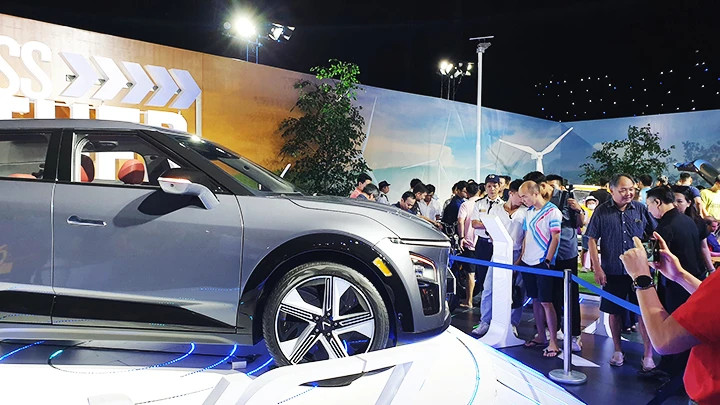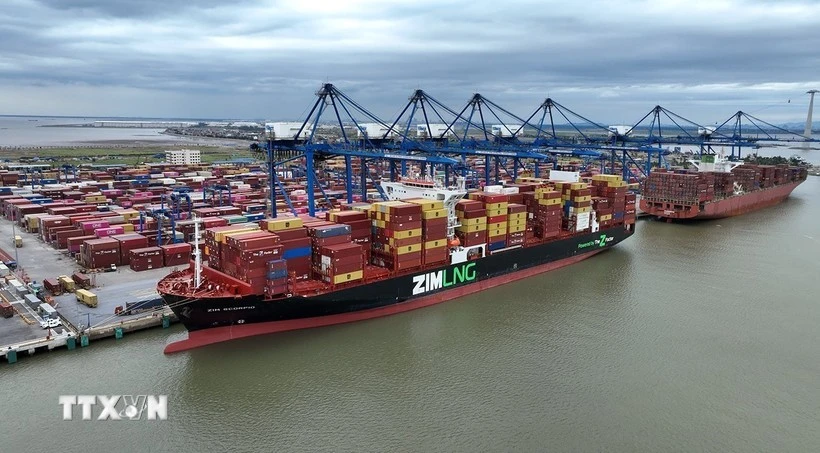The draft strategy for the development of the automobile industry in the new phase has been currently being consulted by the Ministry of Industry and Trade, with a goal of achieving a market size of 1-1.1 million vehicles by 2030, with domestically produced and assembled cars accounting for 70% of the figure.
Expected goals
In 2023, the country registered 408,542 cars. Thus, there are only 5-6 years left to achieve the goal of tripling the market size.
A representative from the Ministry of Industry and Trade stated that the strategy is a long-term vision, so ambitious goals must be set. This is based on the development targets regarding population size, average income per capita, price conditions, infrastructure, parking spaces, charging stations, and more.
Assessing feasibility, Dr Le Quoc Phuong, former Deputy Director of the Trade and Industry Information Centre under the Ministry of Industry and Trade, expressed his belief that it will be difficult to achieve the domestic consumption target of 1-1.1 million vehicles per year by 2030. According to him, there are only 5-6 years left to achieve the goal of tripling the market size, which is a very challenging task.
Dr Le Quoc Phuong noted that Vietnamese businesses mostly assemble vehicles, so the supply can certainly be met. However, the challenge lies in increasing the demand for car purchases, which depends on many factors such as whether the prices are reasonable and whether they can compete with imported vehicles. Of course, domestically assembled cars are cheaper, but consumers tend to prefer imported vehicles.
"There may be some changes in the next few years, but it cannot be a breakthrough. The number of cars sold has nearly tripled, so living standards also need to rise accordingly. Therefore, doubling that target is already a difficult task. Meanwhile, economic growth in recent years has only reached 5-7%," said Dr Phuong.
He also noted that whether the targets can be achieved is closely linked to many other issues that need to be addressed simultaneously. The issue of urban traffic is an example. Currently, major cities are experiencing traffic congestion, which also limits car consumption. Therefore, it is also crucial to consider how to solve this issue and how to prioritise transportation, not to mention that the number of cars in circulation also depends on the availability of parking.
 |
| Workers assemble buses at THACO Truong Hai Automobile Factory. Photo: BAC SON |
Tax and fee assistance needed
Le Huy Khoi, Deputy Director of the Institute for Strategic and Policy Studies in Industry and Trade under the Ministry of Industry and Trade, affirmed that feasibility to achieve the set goals requires not only the efforts from the Ministry of Industry and Trade but also the concerted efforts of many relevant ministries and sectors.
Proposing solutions for Vietnam's automobile industry, the representative from the Ministry of Industry and Trade suggested the focus on implementing several key solution groups to enhance the localisation. This would increase the value-added content of Vietnamese products in the automobile industry as well as the production volume.
The first solution suggested by Khoi is to encourage and develop the domestic automobile market through the implementation of long-term and robust support policies regarding taxes and fees. This aims to stimulate consumption and achieve the goal of reaching over 1 million cars by 2030, ensuring that the market size is attractive enough to attract both domestic and foreign investors.
He also stressed that it is necessary to develop and orient long-term development policies for the automobile industry, accompanied by the development of the supporting industry to ensure effective implementation. This should gradually increase the proportion of domestically produced vehicles and promote export growth.
Developing the supporting industry is essential for the growth of the automobile industry. Therefore, a strategy for developing the supporting industry must also be prioritised. Vu Tan Cong, permanent deputy general director at Vietnam Car Industry and Trade Consulting Co., Ltd., suggested the establishment and operation of five automobile industrial clusters in Hai Phong, Vinh Phuc, Ninh Binh, Quang Nam, and Ho Chi Minh City to provide components and complete automobiles for businesses in those areas and nearby localities.
Automobile expert Nguyen Minh Dong stated that to achieve the goals outlined in the draft, it is crucial to directly address the strategy for developing two core product groups in electric vehicles over the next decade: batteries and electric motors. The strategy needs to be specified through state policies that will support, back, and provide incentives for these product groups such that automakers, suppliers, and even startups can see opportunities in the government’s plan.
Meanwhile, Vu Tan Cong expressed his belief that for the development of the automobile industry, there must be a sufficiently large market for consumption. To achieve this, the products of the automobile industry must meet market demands and have reasonable pricing.
According to him, to meet these requirements, local authorities where automobile dealerships are located should assist these businesses by reducing land rental costs, lowering corporate income tax, and other related expenses. With an expanded business and service system, the Vietnamese automobile market will be broadened.
In addition, with a focus on developing environmentally friendly vehicles, electric and plug-in hybrid (PHEV) vehicles should be completely exempt from special consumption tax, value-added tax, and registration fees (electric vehicles are currently exempt from registration fees).
The strategy for developing the automobile industry in the new phase also sets target that Vietnam will begin producing some key components for the drive system, gearbox, and engine (especially for passenger and light trucks), and gradually expand participation in the supply system of supporting products within the global value chain of the automobile industry by 2030. The goal is to be able to supply 55-60% (in value) of components and parts for domestic automobile assembly production.
















